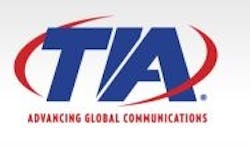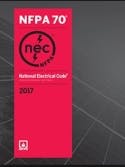Cabling standards potpourri: The week’s top stories
When the Telecommunications Industry Association’s TR-42 Committee met the week of June 12-16, the group and its subcommittees completed some cabling standards projects and started others—all of which are newsworthy and noteworthy, as this week’s top stories indicate.
The second revision of the data center cabling standard will include info on data center fabrics, 16- and 32-fiber MPO connectors, Category 8, and OM5. The standard specifies the minimum requirements for telecommunications infrastructure of data centers and computer rooms, including single-tenant enterprise data centers and multi-tenant internet hosting data centers. The topology specified in standards is intended to be scalable to any size data center.
At the National Fire Protection Association’s annual technical conference in early June, a panel discussion produced news that three tentative interim amendments (TIAs) to the 2017 National Electrical Code will be proposed. Those TIAs will relate to the usability of certain parts of the Code that address remote powering (Power over Ethernet) cabling.
TIA-1179-A cabling standard for healthcare facilities approved
It was a busy week within TR-42, as its TR-42.1 subcommittee completed the TIA-1179-A Healthcare Facility Telecommunications Infrastructure standard, which is the first revision of the 1179 standard that was published in 2010. Among the notable inclusions in TIA-1179A are Cat 6A minimum as backbone and horizontal twisted-pair media, OM4 recommended minimum for multimode backbones, the permission of array connectors in the work area, allowance for the use of MUTOAs and consolidation points, and recommendations for “wiring for wireless” access points and DAS.
Earlier this year BICSI published the standard BICSI 001-2017 Information and Communication Technology Systems Design and Implementation Best Practices for Educational Institutions and Facilities. The association said the specification “is written for today’s education spaces, where network connectivity is no longer considered ‘nice-to-have,’ but is now a ‘must-have,’ like electricity and water.”
TIA begins four standards projects for single-twisted-pair cabling
Tangible evidence that the Internet of Things has a practical impact on cabling technologies and cabling professionals, four projects recently undertaken within the TIA TR-42 Telecommunications Cabling Systems engineering Committee will center on specifications for single-twisted-pair cabling systems. From commercial spaces to intelligent buildings and industrial spaces, single-pair cabling will support the reduced size, higher density, and greater flexibility required by IoT devices.





